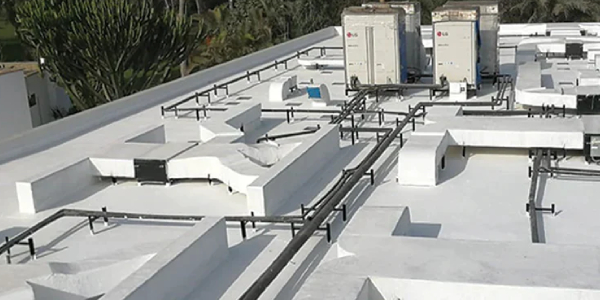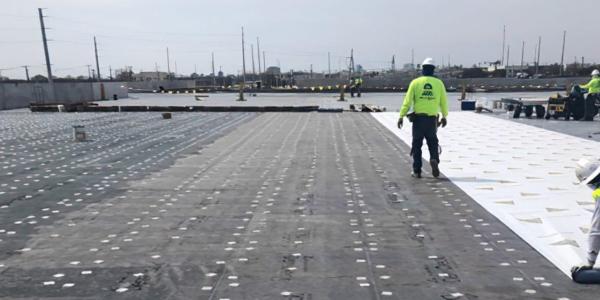7 tips for spring roof maintenance

By APOC.
Go into the warm months prepared with these easy tips for setting roof systems up for success this summer.
In general, it is advised to conduct two inspections on a roof a year, one in the spring and one in the fall as the weather shifts again. As a rule of thumb, if your client’s roof experiences a drastic shift in conditions, it’s a good idea to get up there and make sure everything is working properly. As the weather takes a turn towards hot, make sure to proactively inspect your customers’ roofs and make sure the correct repairs and maintenance are done.
Ensuring that this is taken care of before the warm months has multiple benefits. First, it makes sure the roof is strong going into a season where UV damage and other factors can exacerbate any existing issues. This helps extend the overall lifespan of the roof. Working on it early also keeps costs from rising too high as it minimizes the possibility of emergency repairs.
The first step to this roofing spring cleaning is a preventative maintenance inspection. This is a visual overview and record of the state of the roof. Check out these 7 places that APOC identified to give special attention to during this process.
1 - Roof membranes and flashings
Ensure all flashing membranes are in good condition. Check for signs of stress, cracking, splitting, wrinkles, blisters, etc. Remove any foreign matter such as balls, shoes, tools, branches, oils, chemicals, liquid or other objects. Then, clean the roof membrane and closely inspect for signs of physical damage.
2 - Gutters, drains and scuppers
Because these are the main avenues that rainwater travels off the roof surface and is directed away from the building, it is crucial that these areas are inspected and maintained. Clean and remove any debris clogging or obstructing the flow of water. Look for any sights of cracking or splitting of the membrane around the drains and scupper. If anything is noted, they must be repaired immediately.
3 - Penetrations
Inspect penetrations for signs of wear. Ensure that the base of the penetration remains completely sealed and attached to the roof membrane.
4 - Pitch pans
Check all pitch pans for shrinkage. As sealants shrink over time, water may begin to sit on the top of the pitch pan causing rust, leaks and deterioration.
5 - Metal flashings
Inspect all metal flashings, counter flashings, copings, seams, joints, gravel stops, edge metal and other areas to ensure they are secure and free of rust or deterioration. Any unsatisfactory conditions should be repaired as soon as possible.
6 - Rooftop equipment and accessories
Inspect all rooftop equipment for deterioration and areas that are prone to water penetration. This includes HVAC equipment, duct work, curbs, skylights, etc.
7 - Expansion joints
Check all expansion joints for deterioration, wear and defects. Check the metal components to ensure they are fully secured and free of rust. Make sure the expansion joint is still flexible and resilient. Look for any signs of cracking or splitting while manually flexing the joint.
Original article source: APOC
Learn more about APOC in their Coffee Shop Directory or visit www.apoc.com.


















-2025-xtv-mls-tour-2.png)



Comments
Leave a Reply
Have an account? Login to leave a comment!
Sign In